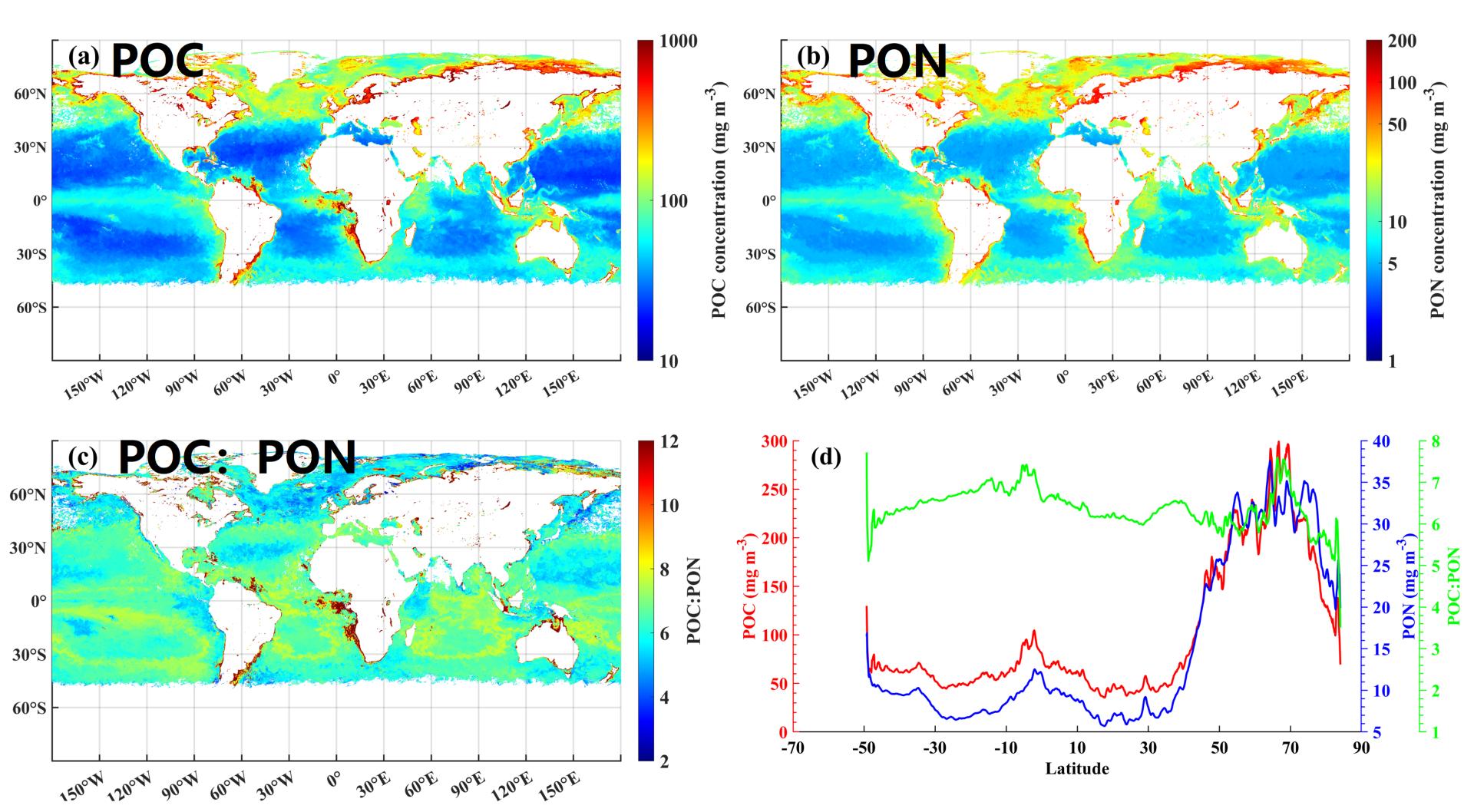On August 22, 2024, Liu’ group published a research paper entitled "Toward Applicable Retrieval Models of Oceanic Particulate Organic Nitrogen Concentrations for Multiple Ocean Color Satellite Missions" in the journal IEEE Transactions on Geoscience and Remote Sensing. Dr. Zhang Yu, a Postdoctoral Fellow from Institute for Advanced Study of Shenzhen University, is the first author. Huizeng Liu is the corresponding author. Institute for Advanced Study of Shenzhen University is the primary affiliation. Co-authors of the paper include Academician Li Qingquan, Prof. Wu Guofeng, and Prof. Zhu Ping from Shenzhen University.
Nitrogen in the ocean is one of the essential nutrients for phytoplankton to carry out photosynthesis. Marine particulate organic nitrogen (PON) refers to nitrogen that is present in the seawater bound organically to particles. It is an important component of the nitrogen cycle in the ocean and is crucial for understanding biogeochemical processes. Particulate organic nitrogen can originate from phytoplankton cells, animal excretions, and fragments of organic matter. When these particles sink into the deep sea, they transport nitrogen to deeper regions, a process known as the biological pump. This vertical transfer has significant implications for the global nitrogen and carbon cycles. Studying marine particulate organic nitrogen helps to better understand nutrient cycling within marine ecosystems, the distribution of productivity, and the impact of climate change on marine ecosystems.
Satellite remote sensing technology has the capability for large-scale and high-frequency monitoring, yet there have been few reports on the feasibility and applicability of remote sensing inversion of marine particulate organic nitrogen (PON). The research group collected global in situ PON measurements and mainstream ocean color satellite remote sensing products from sensors such as SeaWiFS, Terra-MODIS, MERIS, Aqua-MODIS, and SNPP-VIIRS. They extracted synchronous observation datasets from both satellite and in situ measurements, identified the bio-optical indicators suitable for the remote sensing inversion of marine PON, and applied artificial intelligence methods to develop accurate remote sensing inversion models for oceanic PON concentrations. A long-term remote sensing dataset of global oceanic PON were generated using the developed models. Additionally, by combining with remote sensing inversion products of particulate organic carbon (POC), the study further explored the possibility of deriving the ratio of particulate organic carbon to particulate organic nitrogen (POC:PON) from satellite observations. The remote sensing inversion models and satellite remote sensing products developed in this study contribute to better understanding of the dynamic changes and ecological processes of marine nitrogen in the context of marine biogeochemical cycles.
This work was supported in part by the Guangdong Major Project of Basic and Applied Basic Research under grant 2023B0303000017, the Guangdong Basic and Applied Basic Research Foundation under grant 2024A1515011388 and 2023A1515011946, the National Natural Science Foundation of China under grant 42371337 and 42201319, and the Shenzhen Science and Technology Program under grant JCYJ20230808105709020.
Research findings have been published in the journal of IEEE Transactions on Geoscience and Remote Sensing, andFrontiersinMarine Science:
Yu Zhang, Huizeng Liu*, Fei Wang, Ping Zhu, Zhengxin Zhang, Yanru Wang, Yongquan Wang, Guofeng Wu, Qingquan Li, Towards Applicable Retrieval Models of Oceanic Particulate Organic Nitrogen Concentrations for Multiple Ocean Color Satellite Missions. IEEE Transactions on Geoscience and Remote Sensing, 2024, 62, 4209914,https://ieeexplore.ieee.org/document/10643619
YongquanWang, Huizeng Liu*, Guofeng Wu,Satellite retrieval of oceanic particulate organic nitrogen concentration. Frontiers in Marine Science, 2022, 9:943867.https://doi.org/10.3389/fmars.2022.943867

Figure1.Satellite retrieval of particulate organic carbon concentration (POC), particulate organic nitrogen (PON) and the ratio of POC to PON.


